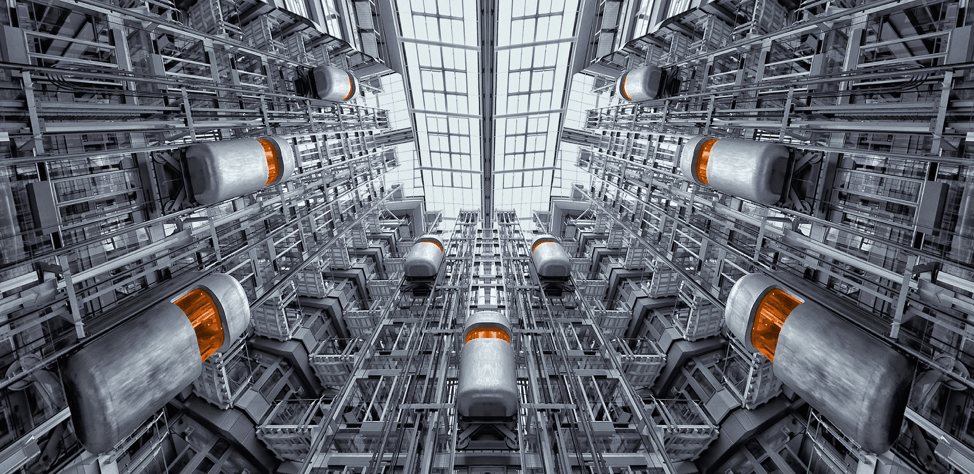We’re in the midst of an Industry 4.0 revolution. Automation and data – including cyber-physical systems, the Internet of Things, cloud computing, and cognitive computing – are leading to a shift in the way products are designed and manufactured. Today, I’m sharing information about the current state of Industry 4.0, a few of my favorite examples, and possibilities for the future.
First, what is Industry 4.0?
Digital Manufacturing will supplant today’s traditional manufacturing, which is highly industrialized, complex, and very inefficient at enabling anything other than mass production of standardized product designs.
According to McKinsey, Industry 4.0 is “the next phase in the digitization of the manufacturing sector, driven by four disruptions:
- the astonishing rise in data volumes, computational power and connectivity;
- the emergence of analytics and business-intelligence capabilities;
- new forms of human-machine interaction such as touch interfaces and augmented-reality systems; and
- improvements in transferring digital instructions to the physical world, such as advanced robotics and 3-D printing.”
I’ve heard some argue that the term “Industry 4.0” is meaningless because technological innovations are continuous, but I disagree. Automated production, cloud-based collaboration tools, and smart logistics are a key part of our technological advancements and will continue to drive change in the future. Industry 4.0 is not only about upgrading or replacing equipment; it’s about leveraging the data we receive to make humans and machines more efficient. It’s about reinventing processes and workflows to make production & processes smarter, more sustainable and more secure. Industry 4.0 means looking at the end-to-end process–from design, prototyping, production, to distribution—removing redundancies, streamlining tasks, and create new opportunities for personalization and customization. It’s a major overhaul of not just equipment, but how businesses work and think about manufacturing.
What industries are being transformed?
Industry 4.0 is changing the way we do business in a variety of industries worldwide.
Healthcare
There are few medical corporations larger or more influential than Johnson and Johnson and the company has embraced 3D printing in a big way. They’ve collaborated with HP to develop advanced applications for 3D printing in the biomedical sphere.
The goal of the partnership with Johnson & Johnson is to find ways to implement 3D printing technology that will help them develop better healthcare outcomes for patients, consumers and health care providers while reducing costs. We plan to combine our scientific, clinical, material science, and technological expertise to develop a series of consumer products, medical solutions, and medical devices that can be manufactured quickly. 3D printing will allow them to develop products that have been customized for individual patients and consumers based on their specific needs.
Manufacturing
Smart factories have a lot to gain from Industry 4.0. Advanced technology allows them to be precise with their materials and resources overall. Computers monitor the use, consider the factory’s current projects, and provide an accurate estimate of what is needed for the next project.
As a car aficionado, I’m always fascinated by the constant reinvention that car factories experience. For example, when Volkswagen initially floated the idea of their new factory, Glaserne Manufaktur, in a downtown European city, citizens were unsure of the plans. What would the noise or environmental impact be to their city? How would it effect other businesses downtown?
Along with famed architect Gunter Henn, Volkswagen set out to reinvent the factory from a dirty, noisy place into a modern, beautiful place. Fast forward to 2002, the factory was opened and soon became one of the city’s top-visited attractions. The factory boasts an art gallery-like facade, hosts concerts, and best of all, installed a magnetic floor that works as a roadmap for the robotics sledge.
How can your organization succeed in Industry 4.0?
No matter what the technological advancement, I believe companies should follow a few basic rules.
- Focus on your target customer and outcome, and build your organizational plan based on those.
- Establish a schedule, roadmap, minimum viable organization, and clear message.
- Ensure your employees understand your overall vision and actively participate in its development.
- Provide valuable training, adequate time, and budget to deliver on your vision and objectives.
Overall, how Industry 4.0 evolves in the future is up to the innovators and makers of the world. We must remain open to fresh ideas, new tools, and collaboration from all industries. Whatever the final outcome, I believe it will make humans, machines, and companies more efficient and powerful.
Pingback: Industry 4.0 takes center stage at World Economic Forum | Shane Wall
